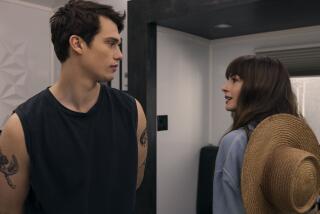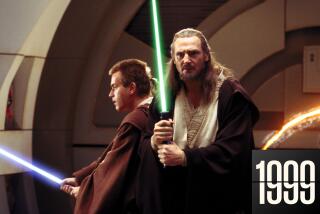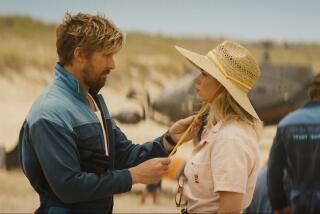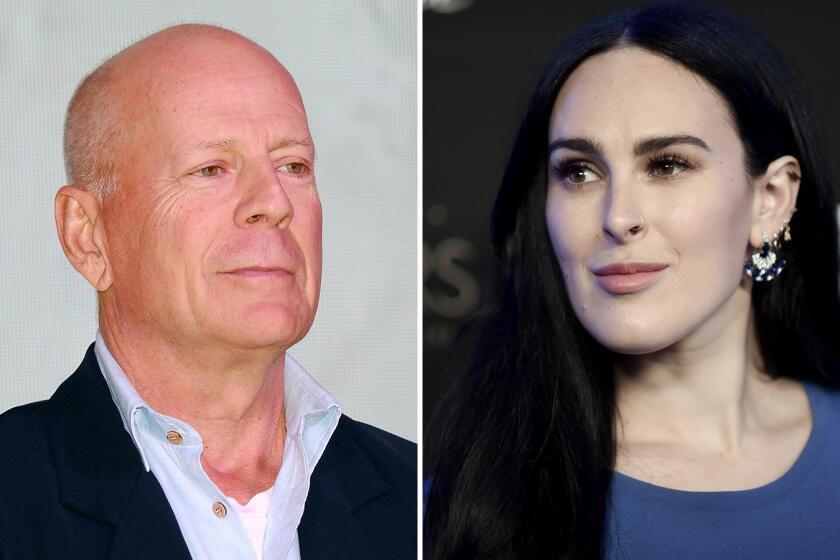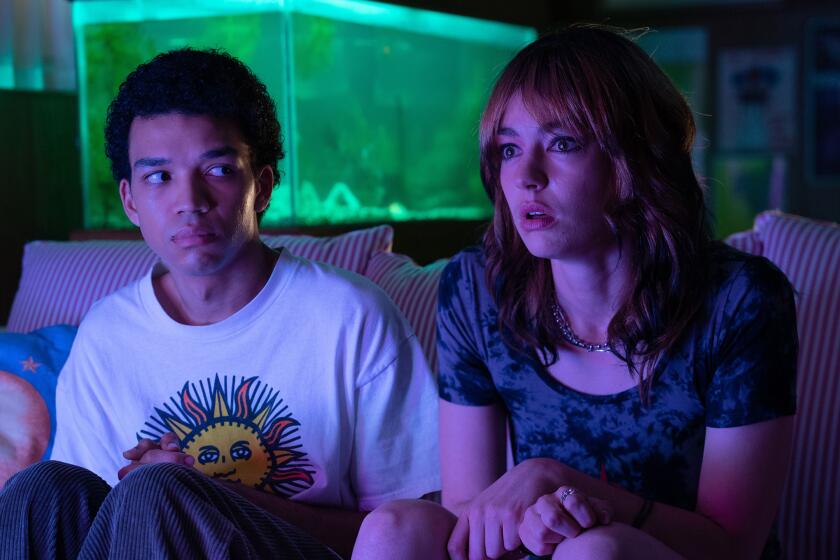Darren Aronofsky’s dances with ‘Swan’
With its supernatural thrills, character subtleties and ballet-world backdrop, “Black Swan” is one of the more audacious combinations of genres in contemporary American cinema.
Just don’t tell that to the man who created it.
“To me it doesn’t feel more ambitious than my previous movies,” said director Darren Aronofsky with twinkling amusement. “I’ve been hearing that from a few people, and I guess it’s flattering. I just don’t know if I see it.”
There are many, however, who might. The dark psychological film from the American auteur (“The Wrestler,” “Requiem for a Dream”) stars Natalie Portman as Nina, a sheltered and repressed ballerina. An imperious dance director ( Vincent Cassel) gives Nina the role of a lifetime — the lead part in a major New York City production of “Swan Lake.” But Nina soon finds herself dogged by an upstart rival, Lily ( Mila Kunis), who may be after Nina’s job or, in mind-bending Aronofsky fashion, may simply be a figment of Nina’s imagination.
The film’s unusual genre combinations have given pause to some reviewers — but “Black Swan” is nevertheless turning into a cultural event, despite a release date 10 weeks away. After a trailer that drummed up 1.3 million views on YouTube (nearly unheard of for an art-house movie) and well-received screenings at the Venice and Telluride Film Festivals, the film arrives at the preeminent North American showcase for fall movies, the Toronto International Film Festival, where it premieres to the public Monday night.
Much of the curiosity stems from audiences eager to discover just what exactly the movie is about. It won’t be black and white for them. There are mystical touches — Nina in fleeting moments appears to have feathery skin and an elongated neck, which suggest she is turning into a swan. Still, there are also more conventional plot elements, such as an overbearing mother ( Barbara Hershey) and a perfectionist director (Cassel).
Aronofsky’s preoccupation with broken-down body parts are clearly evident in the film. So is a much-ballyhooed lesbian love scene, as well as the trappings of a haunted-house horror picture. “It’s a Polanski movie, and then it becomes a Dario Argento movie,” said Cassell, describing his reaction when he saw it for the first time, in Venice, two weeks ago. “And maybe a little bit of David Cronenberg too.”
There are also unmistakable parallels between “Black Swan” and Aronofsky’s previous “The Wrestler,” particularly as it relates to the toll exacted by a life of performance. (“Black Swan” screenwriter and Aronofsky producing partner Mark Heyman said the two were conceived as “companion pieces.”)
Yet one of the most buzzed-about movies of the fall almost wasn’t a movie at all.
Aronofsky had been hoping to make a ballet-themed film for nearly a decade, inspired by his sister’s youthful experience with ballet. “I didn’t really understand it,” he said, “which is what maybe made me a good person to translate it.” (He also was interested in a doppelgänger movie after reading a Feodor Dostoevski novella called “The Double.”)
So years ago, he became involved with a script owned by longtime producer Mike Medavoy called “The Understudy,” a murder-mystery set in the theater world, in the hopes that the ballet element could be woven into it. The project was set up at Universal. But after several drafts, the film hit the skids.
In the meantime, the director had seen “Swan Lake.” “When I saw the story of the black swan and the white swan, I decided to throw everything away and connect all the characters and myths to ‘Swan Lake,’” Aronofsky said. “The credits should really say, ‘Co-written by Tchaikovsky.’”
Aronofsky decided to pull the project from Universal and make it as an independent film. Heyman, a principal at the director’s New York production company Protozoa Pictures, wrote a new draft in collaboration with the filmmaker. Heyman spent weeks studying ballet rehearsals to incorporate those aspects into the film. “It wasn’t easy to get the balance right,” Heyman said, recalling the roughly 10 drafts he went through. (In one version, the Lily and Nina characters would have been played by the same actress, but they nixed that idea because “we thought it would tip our hand.”)
Aronofsky said that while he didn’t think in terms of genres, he did have one explicit goal: “We wanted to a make a movie that scared the ... out of people.”
Portman too threw herself into the effort. After discussing a ballet project with Aronofsky for years, she came aboard in early 2009. She flew a trainer to the set of her comedy “Your Highness” in Britain last summer and spent her set breaks swimming and sharpening her ballet skills. “I think she was playing the role long before we were even in pre-production,” said Protozoa’s Scott Franklin, a producer on “Black Swan.”
[UPDATED, 12:47 a.m. Still, there were serious doubts that the movie would move forward as financiers came in, then dropped out. The budget was worked out, then the project stalled, then the budget reworked. (The movie ended up with a budget of about $13 million, inconceivably low given the stars and the required effects.) And still there were financier issues. Finally, Brian Oliver’s Cross Creek Productions and Fox Searchlight -- high off its distribution of “The Wrestler” -- decided to come in. “Sometimes I look back and I can’t believe we’ve come down this long and tortured road,” Franklin says.
The end-point on that road is a movie that looks like a flashy genre picture even as it traffics in the ambiguities and moods of the art-house world. Whether that hybrid can work with audiences remains a question. “The Wrestler” made $26 million in the U.S. This film has the potential drawback of the ballet setting, but also the advantage of bigger stars and genre elements.
Then again, there wasn’t nearly as much riding on “The Wrestler.” “It was nicer when we were the secret underdog.” Franklin says, “Now we’re coming in with a bulls eye on our chest.”
Aronofsky, too, sounds an improbably nostalgic note for those days. “With ‘The Wrestler’ we were the last film of Venice, and no one knew what it was. Mickey Rourke? Wrestling?” says the director, who with that film was also coming off the coolly received “The Fountain.” “Expectations then were at a low place. I don’t know if I’ll ever be lucky enough to be there again.”]
steven.zeitchik@latimes.com
More to Read
Only good movies
Get the Indie Focus newsletter, Mark Olsen's weekly guide to the world of cinema.
You may occasionally receive promotional content from the Los Angeles Times.
